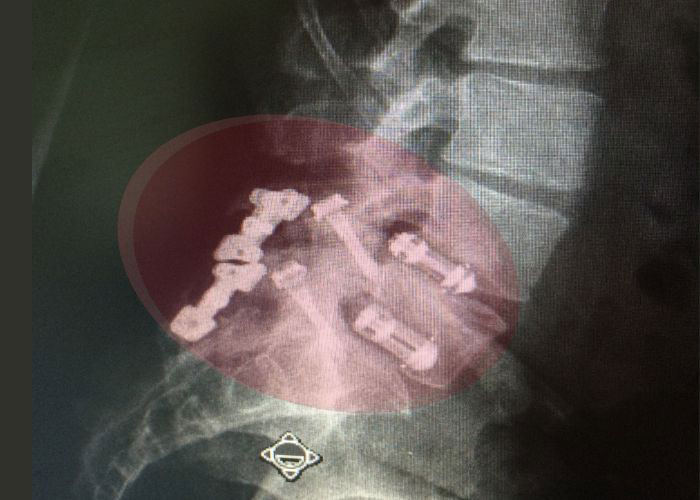Minimally Invasive LLIF Surgeon
If you have persistent low back pain with a degenerative disc or herniated disc, you may want to consider a lateral lumbar interbody fusion. This minimally invasive procedure can be done for patients in Clear Lake, Houston and Sugar Land, Texas who have been unable to escape their low-back pain. Dr. Andre Samuel specializes in LLIF and can help you. Contact his office to discuss your treatment options.

What is lateral lumbar interbody fusion or LLIF?
Lateral lumbar interbody fusion (LLIF) is a minimally invasive spinal surgery performed to treat lower back pain. LLIF is performed by accessing the lumbar spine (lower back) through a small incision from the left or right side. The surgeon uses specialized surgical tools to perform the fusion within the body. During an LLIF a damaged disc may be removed and replaced with a titanium spacer filled with bone graft. This reduces pain from a degenerated disc, relieves nerve compression from disc collapse, and provides stability to unstable or “slipped” vertebra bones. The affected vertebrae are fused together to alleviate pain caused by spinal issues like degeneration or nerve compression. Dr. Andre M. Samuel, orthopedic spine surgeon, treats patients in Clear Lake, Houston and Sugar Land area who are having extreme lower back pain.

Which spinal conditions can be helped with LLIF?
Many conditions can be helped or treated with lateral lumbar interbody fusion including, but not limited to:
- Degenerative Disc Disease
- Herniated disc disease
- Spondylolisthesis
- Scoliosis
- Spinal Stenosis
- Intervertebral discs that frequently herniate
How is LLIF or lateral lumbar interbody fusion done?
First, an incision is made on the patient’s side and a path is made to the spine. A specialize expandable retractor is used, which allows surgical instruments to be passed through to access the spinal column without interacting with other organs or structures within the spine. The injured intervertebral disc is then removed, and the space is filled with bone tissue from a bone graft. Surgical screws are then used to hold the vertebrae in place, to allow the bone tissue to heal and allow the two spinal bones (vertebrae) to fuse together. After ensuring proper placement, Dr. Samuel removes the surgical tools and closes the incision.
What is the recovery like after lateral lumbar interbody fusion (LLIF) surgery?
Minimally invasive lateral lumbar interbody fusion surgery is typically an inpatient procedure requiring one- or two- nights in the hospital depending on the number of levels treated.. Most patients are able to walk immediately following the surgery and Dr. Samuel gives them a specific protocol that may include:
- Limits on lifting with restrictions on heavy lifting
- No bending or twisting
- Running or jogging is not allowed for several weeks.
- Patients are usually able to return to work within 2-3 weeks
- Full recovery and return to activities is typically around 8-10 weeks.
Will minimally invasive LLIF or Lateral Lumbar Interbody Fusion help my low-back pain?
The success rate of LLIF is excellent with high satisfaction rates in patients who have the correct indications for surgery. Not all forms of back pain can be treated with LLIF surgery. Dr. Samuel takes special care to ensure patients have the correct symptoms and imaging findings that will predict a successful outcome after surgery. The minimally invasive nature of this surgery allows for less risk of infection, and a much quicker recovery time as compared to other types of spinal fusion surgeries. The surgical incisions heal quickly and leave little-to-no scarring. Most patients experience a significant reduction in back pain following the surgery.



